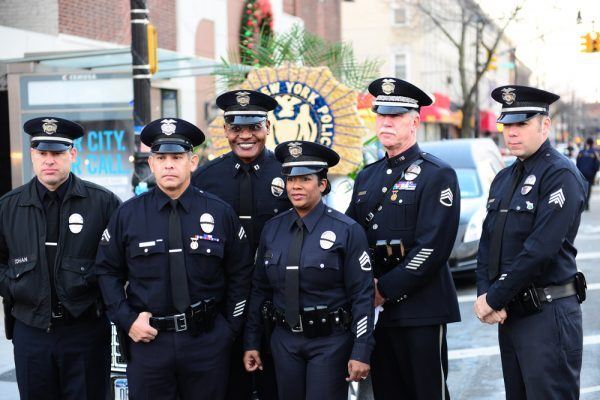Workplace Violence is a serious concern in California. Some of the most infamous workplace violence episodes have occurred in California. This includes the San Ysidro McDonalds shootings, the Piper Tech shootings, and the San Bernardino terrorist shootings.
Not all workplace violence involves fatalities. There are many workplace violence events of a non-fatal variety. These violence acts are significant in the workers’ compensation area because workers who are either injured in the incident or suffer emotional injury as a result of witnessing the events. These effected workers are entitled to seek medical treatment and disability benefits through the workers’ compensation system.
There was a recent study of interest which provides insight to workers with respect to these incidents.
This article will discuss non-fatal workplace violence, how it interacts with the workers’ compensation system and the rights that an Injured Worker has relating to those incidents.
What Were the Non-Fatal Workplace Violence Studied?
In a recent study, non-fatal violence in the workplace was investigated. In the study, the “types of crime included rape/sexual assault (including attempted rape, sexual attack with serious/minor assault, sexual assault without injury, unwanted sexual contact without force, and verbal threat of rape/sexual assault); robbery (including attempted robbery); aggravated assault (attack or attempted attack with a weapon, regardless of whether or not an injury occurred, and attack without a weapon when serious injury resulted, and including aggravated assault with injury, attempted aggravated assault with weapon, and threatened assault with weapon); simple assault (attack without a weapon resulting in no or minor injury, and including simple assault with injury and assault without weapon without injury); and verbal threat of assault.” Siegel, M. Johnson, CY, Lawson CC, Ridenour M Hartley D. Nonfatal Violent Workplace Crime Characteristics and Rates by Occupation- United States, 2007-2015. MMWR Morb Mortal Wkly Rep 2020;69: 324-328.
What Are the Frequency Rates of the Different Forms of Violence?
The most frequently reported type of crime was threat of assault (44%), followed by simple assault (37%), aggravated assault (13%), rape/sexual assault (3%), and robbery (3%). Siegel, M. Johnson, CY, Lawson CC, Ridenour M Hartley D. Nonfatal Violent Workplace Crime Characteristics and Rates by Occupation- United States, 2007-2015. MMWR Morb Mortal Wkly Rep 2020;69: 324-328.
Note: workplace violence does not necessary translate into matters of physical harm to workers. Threats of assault can cause psychological injury or give rise to physiological stress responses such as a heart attack. Likewise, witnessing these various events might give rise to such problems as well.
Are the Violence Rates Different Between Occupations?
Yes. In the study, “[d]uring 2007–2010, occupations with the highest rates of violent workplace crimes were Protective services (e.g., first responders) (101 crimes per 1,000 workers); Community and social services (19); Healthcare practitioners and technicians (17), Healthcare support occupations (17); Education, training, and library occupations (eight); and Transportation and material moving occupations (seven.)” Siegel, M. Johnson, CY, Lawson CC, Ridenour M Hartley D. Nonfatal Violent Workplace Crime Characteristics and Rates by Occupation- United States, 2007-2015. MMWR Morb Mortal Wkly Rep 2020; 69:324-328.
Note: It is interesting to note which areas of the workforce in which the acts occur. It appears that the key factor is the significant contact that workers have with the public.
Are All Workplace Violence Episodes a Valid Work Injury?
No. There are several issues that can come up. First, there is the initial aggressor rule. Second, if the alleged criminal has a relationship to the victim, there may be some issue of controversy as to whether it was a workplace event versus an event that happened at the workplace. Legal analysis would be recommended in those circumstances.
Is there a Difference Physical Injuries versus Psychological Injuries?
Yes. Psychological Injuries have thresholds that must be met in order to prevail.
The Labor Code Section 3208.3 provides lower burdens for violent acts. It is noted in the section that “in the case of employees whose injuries resulted from being a victim of a violent act or from direct exposure to a significant violent act, the employee shall be required to demonstrate by a preponderance of the evidence that actual events of employment were a substantial cause of the injury.” Further, ““substantial cause” means at least 35 to 40 percent of the causation from all sources combined.”
Further, there are other sections that may assist on a psychiatric claim. They, however, require a factual analysis. Therefore, they may be relevant but will not be discussed within this article.
Additionally, for certain safety and law enforcement officers, there is a post-traumatic stress disorder presumption. Click here for an article discussing it.
Are There Any Other Sources of Benefits?
Yes. The State of California has a Victims of Crime Program which can also provide benefits in some circumstances. Click here for an article discussing it.
What if I Need Advice?
If you would like a free consultation regarding workers’ compensation, please contact the Law Offices of Edward J. Singer, a Professional Law Corporation. We have been helping people in Central and Southern California deal with their workers’ compensation cases for 27 years. Contact us today for more information.


